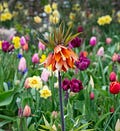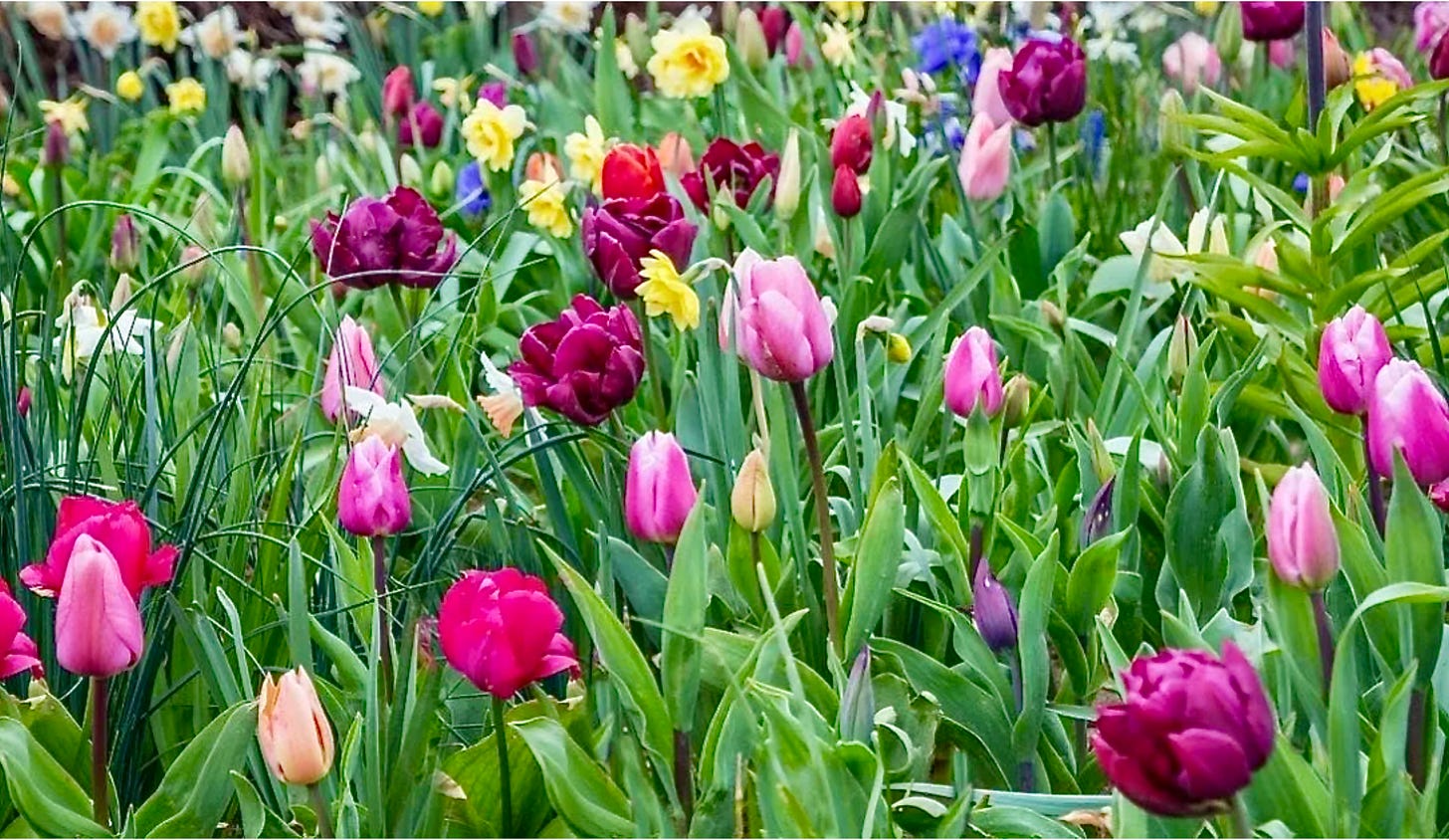How to create and plant a bulb meadow
What bulb meadows are and how to choose the right varieties for next year
This post was first published in April 2022 - although the weather is VERY different, this bulb meadow is still looking glorious this year, so if you’d like to know how to create a meadow of tulips, daffodils and other late Spring treasures, let me show you how to make one of your very own:
Last August, I spent a very lovely day at The Bell, a pub with a garden with a difference, and I underline here that the reason for my spending a whole day there wasn’t all about the aperols. It was a very proper day in fact (not that aperols are improper); I was there filming with the legend that is Joe Swift for the legendary programme that is BBC Gardener’s World.
Being August, the grasses and the dahlias were having their moment. The filming took place in the August moment in a year of highlights; the reason I’m bumping all the other TGM scheduled posts is that this garden’s Spring highlight has well and truly arrived. The bulb meadow is in flower, very conveniently popping out to coincide with a long holiday weekend.
If you’re new to gardening, you may wonder why things don’t behave as the instructions say they will
You may have planted a March-April flowering clematis to flower before a May-June flowering clematis yet have noticed that they are both blooming their socks off right now. Together. Please, be reassured that this is totally normal. You’ll find, and other gardeners here will help out with their own experiences, that the unusual is usual, and surprise is a daily event.
Whatever you plan, be prepared for something to just nudge that planning sideways.
It appears that this year, the bulbs have decided to do it all at once.
The early- (March), mid- (March-April) and late-flowerers (May) have all decided to go for it at once. A hot March got them all going, the tulips taller this year than last due to the Spring rains necessary for height. Then the weather became cold again, which held suspended everything that had popped into bloom, as if they’d all been put in a fridge.
In a bulb meadow such as this one in this pub garden, this all-at-onceness is an unexpected but absolutely welcome surprise.
Crown imperials, narcissi, anemone and tulips dot along and through this meadow - here, I mean ‘meadow’ in the sense that a mix of plants are allowed to grow and flower.1 I’ll experiment with perennials in this way too, shaking things up and letting it all hang out, not controlling, instead simply providing the space and occasionally helping out where necessary.
The pick of colours is key





